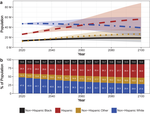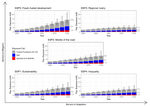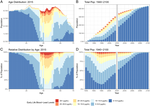Mathew E. Hauer
Assistant Professor of Sociology
Florida State University
Biography
I am the Charles B. Nam Associate Professor of Sociology at Florida State University and a faculty affiliate in the Center for Demography and Population Health. My expertise is at the intersection of demography, migration, population projections, and climate change.
I have received the Cozzarelli Prize from the National Academies of Science, Engineering and Medicine for best paper in the Social and Behavioral sciences published in the Proceedings of the National Academies, the Early Achievement Award from the Population Association of America, twice received the E. Walter Terrie Award for the best paper on Applied Demography, and the University of Georgia awarded me an Excellence-in-Research Award for my dissertation on sea level rise and human migration. More than 800 media outlets have covered my research including Time Magazine, the New York Times, the Guardian, the Washington Post, and National Geographic, amongst others. Prior to arriving at FSU, I spent nearly a decade directing the Applied Demography Program at the University of Georgia.
My dissertation work concerned forecasting the destinations of populations displaced by sea-level rise in the United States and has garnered more than 1,300 citations since 2016.
- Sea-level rise and human migration published in Nature Reviews Earth & Environment
- Assessing population exposure to coastal flooding due to sea level rise published in Nature Communications
- Migration induced by sea-level rise could reshape the US population landscape published in Nature Climate Change
- Millions projected to be at risk from sea-level rise in the continental United States published in Nature Climate Change
- Evacuees and migrants exhibit different migration systems after the Great East Japan Earthquake and Tsunami published in Demography
- No landward movement: examining 80 years of population migration and shoreline change in Louisiana published in Population & Environment
- Sea-level rise and sub-county population projections in coastal Georgia published in Population & Environment
Interests
- Demography
- Migration
- Climate Change
Education
PhD in Geography, 2016
University of Georgia
MS Demography, 2008
Florida State University
BS Sociology, 2007
Florida State University



